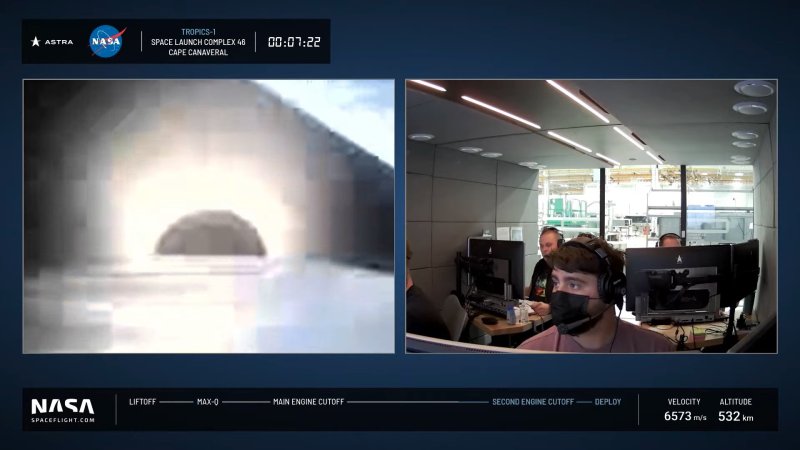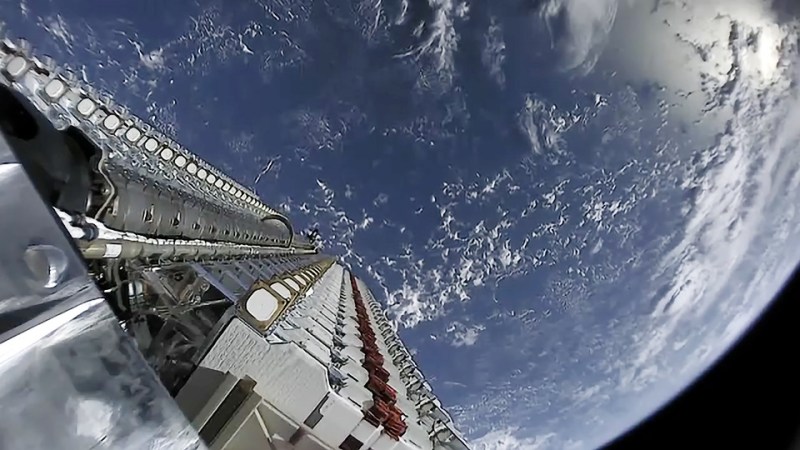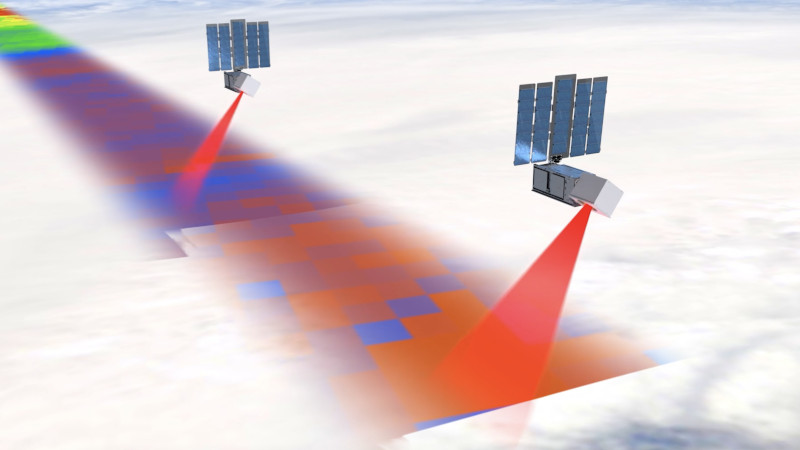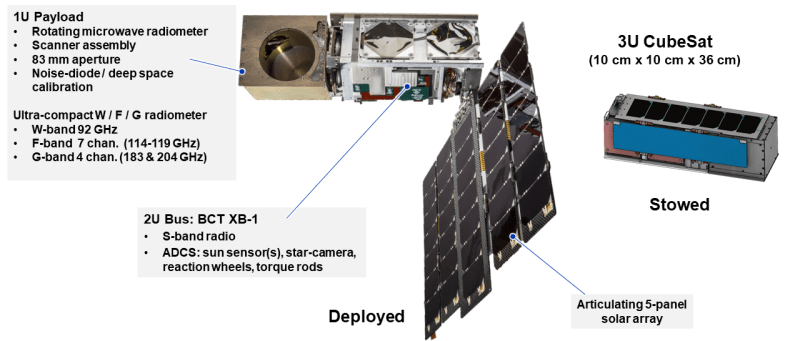When Astra’s diminutive Rocket 3.3 lifted off from its pad at the Cape Canaveral Space Force Station on June 12th, everything seemed to be going well. In fact, the mission was progressing exactly to plan right up until the end — the booster’s second stage Aether engine appeared to be operating normally until it abruptly shut down roughly a minute ahead of schedule. Unfortunately, orbital mechanics are nothing if not exacting, and an engine burn that ends a minute early might as well never have happened at all.
According to the telemetry values shown on-screen during the live coverage of the launch, the booster’s upper stage topped out at a velocity of 6.573 kilometers per second, well short of the 7.8 km/s required to attain a stable low Earth orbit. While the video feed was cut as soon as it was clear something had gone wrong, the rigid physics of spaceflight means there’s little question about the sequence of events that followed. Without the necessary energy to stay in orbit, the upper stage of the rocket would have been left in a sub-orbital trajectory, eventually reentering the atmosphere and burning up a few thousand kilometers downrange from where it started.

Of course, it’s no secret that spaceflight is difficult. Doubly so for startup that only has a few successful flights under their belt. There’s no doubt that Astra will determine why their engine shutdown early and make whatever changes are necessary to ensure it doesn’t happen again, and if their history is any indication, they’re likely to be flying again in short order. Designed for a Defense Advanced Research Projects Agency (DARPA) competition that sought to spur the development of cheap and small rockets capable of launching payloads on short notice, Astra’s family of rockets have already demonstrated unusually high operational agility.
Astra, and the Rocket 3.3 design, will live to fly again. But what of the payload the booster was due to put into orbit? That’s a bit more complicated. This was the first of three flights that were planned to assemble a constellation of small CubeSats as part of NASA’s TROPICS mission. The space agency has already released a statement saying the mission can still achieve its scientific goals, albeit with reduced coverage, assuming the remaining satellites safely reach orbit. But should one of the next launches fail, both of which are currently scheduled to fly on Astra’s rockets, it seems unlikely the TROPICS program will be able to achieve its primary goal.
So what exactly is TROPICS, and why has NASA pinned its success on the ability for a small and relatively immature launch vehicle to make multiple flights with their hardware onboard? Let’s take a look.
Getting Close to the Action
There are no shortage of weather satellites in Earth orbit, but they largely operate in isolation from each other. In part because they are all of varying ages and technical capability, but largely because they were always designed as stand-alone missions. The Time-Resolved Observations of Precipitation structure and storm Intensity with a Constellation of Smallsats (TROPICS) mission aims to fundamentally change that approach by utilizing a constellation made up of identical CubeSats in low Earth orbit.These craft are outfitted with high-resolution microwave radiometers that can scan across the satellite’s track over the ground, and with careful alignment of their orbital planes, should be capable of providing scans of a given storm on a roughly hourly basis.
Compared to more traditional satellites, even the relatively modern NOAA-20 that was launched in 2017, this is a huge improvement. Operating independently, these satellites may only be able to image a storm every four to six hours, which leaves critical gaps in coverage. The rapid scans made possible by the TROPICS constellation promise to greatly improve our ability to predict and track deadly tropical cyclones, which have become steadily more common in the Mid and North Atlantic regions. According to NASA, this area saw a record-breaking 30 named storms in 2020, and climate models expect things to only get worse from here.
TROPICS was designed to utilize six 3U CubeSats, each 36 cm (14.2 in) long and weighing just 5.34 kg (11.8 lb). With the loss of the first two satellites on June 12th, the constellation is now down to just four. The remaining satellites will still be able to image tropical storms, and will doubtlessly deliver useful data, but the reduced global coverage means the time between flyovers will be increased. Though it should be noted that even at reduced capacity, TROPICS should still be able to provide data more rapidly than existing platforms.
While off to a disappointing start, it should be remembered that TROPICS is ultimately a low-cost experimental mission. Even had all three launches gone to plan, the mission was only scheduled to last a year. As long as even a single TROPICS CubeSat is able to reach orbit and use its equipment to scan an active tropical storm, the scientific goals of the mission will have been met — if not the aspirational ones.
Special Delivery
Naturally, one might wonder why a constellation of just six satellites needs to be launched on three different rockets. After all, SpaceX has been lofting as many as 60 of their Starlink satellites per launch to build out their own constellation. Couldn’t all six of the TROPICS CubeSats have been carried into orbit at the same time if NASA had booked their passage on a more powerful rocket?
Technically, yes. But then, they would not have been placed in the appropriate orbital planes to achieve the mission’s stated goal of hourly overflights. Granted, this goal is likely already unobtainable due to the unexpected loss of the first pair of spacecraft, but had they all been deposited along the same orbital track their coverage would have been just as limited as the traditional weather satellites.

Could the satellites not have maneuvered into their appropriate orbits once dropped off, like Starlink satellites do? Perhaps if they were larger, and had sufficiently powerful propulsion systems. But orbital plane changes (that is, changing the inclination at which a spacecraft orbits in reference to the equator) take an incredible amount of energy, especially in low Earth orbit, and the tiny 3U CubeSats simply don’t have the capability to make maneuvers of that scale.
Given the specific goals of the mission, and the limitations of the small and inexpensive satellites being flown, Astra’s rocket is actually the perfect vehicle to carry TROPICS. In fact, the needs of this mission are not so far removed from the original DARPA competition that Astra developed their booster for. The military wanted a rocket that could put small satellites into very specific orbits over the Earth quickly and cheaply for reconnaissance purposes, it just so happens that these particular satellites are more concerned with the strength and movement of tropical storms than troops and tanks.
Which is why, despite this disappointing setback, the next two batches of TROPIC satellites will almost certainly fly on Astra’s rockets, though they will now need to wait until after the incident investigation into the June 12th failure is complete. While other small boosters such as Rocket Lab’s Electron and even Virgin Orbit’s LauncherOne could potentially stand in if absolutely necessary, the cost and expense of adapting the mission to a new launch vehicle isn’t to be underestimated. Besides, as the saying goes: better late than never.

















Per ardua.
De caelis ad terram.
Assuming they are fairly cheap to make (I thought that was the point of cubesats). Why don’t they just manufacture two more satellites in time to launch after the other four get sent up?
I suspect the launches cost a lot more than satellites, so maybe they don’t have enough money left for an additional launch.
Why don’t they put weather satellites into geosynchronous orbits? Continuous observation of the whole globe except the poles.
Might need more than 6 satellites to cover the globe that way.
Most wx sats are in geosynchronous orbits.
These cubesats are closer to the Earth to have a closer view of the action.
Note that a geosynchronous orbit must be above the equator. By definition this makes viewing some places closely difficult, as not all places are at the equator! ;-) Orbital mechanics are so unrelentingly “Physicsey”!
Because geosynchronous orbit is a long, long way out. This would affect sensor resolution.
Just when we thought NASA learned the hard way to not name a satellite that rhymes with “trouble”.
They produce the “Astra Disastra!”
B^)
This is what Rocket Lab does well. From NZ :-)
I think its fairly likely that NASA is trying to help Astra along because it benefits nasa to have multiple launch providers available. While these sats will likely provide useful data, they are also likely intended to be proving that it’s a viable approach as a sort of technology demonstrator.
Wonder if there’s the usual Insurance available for achieving orbit?
It is. Commercial satellite operators (mainly for communication satellites) use it. Sometimes, if a satellite ends up in the wrong orbit, the insurer will step in to help get it to where it’s supposed to be, if that’s cheaper than just writing it off. But NASA self-insures.